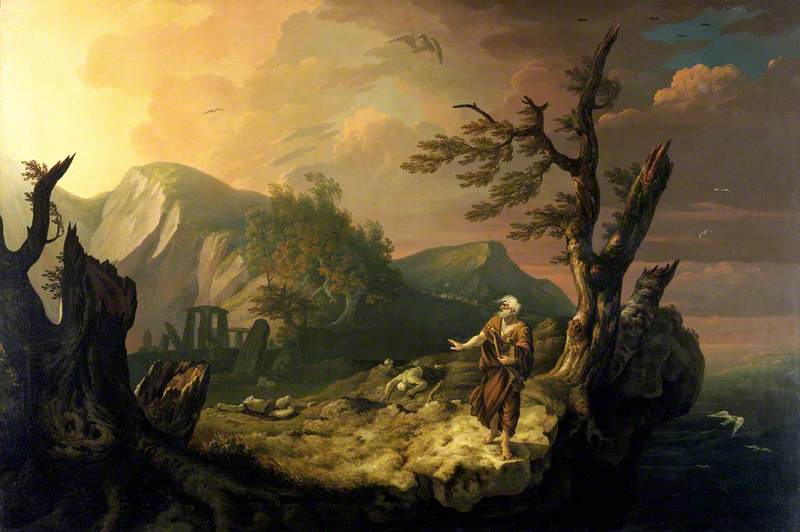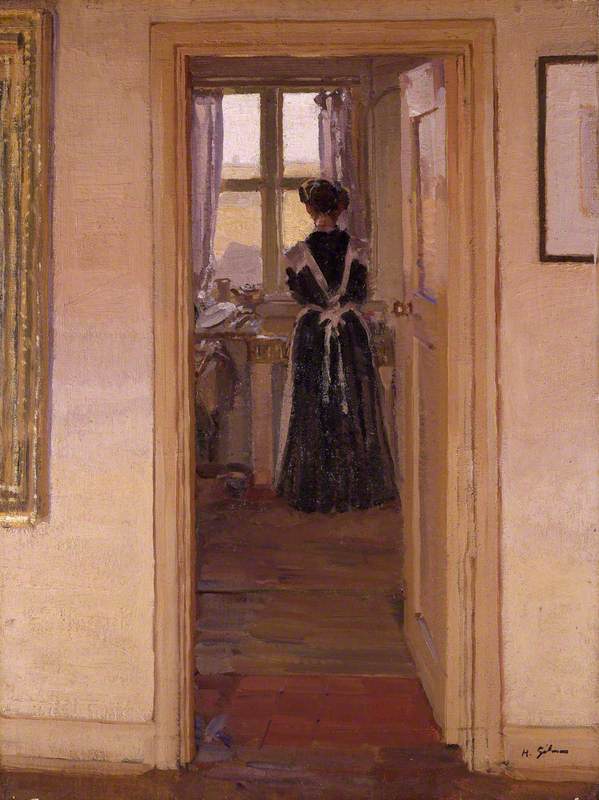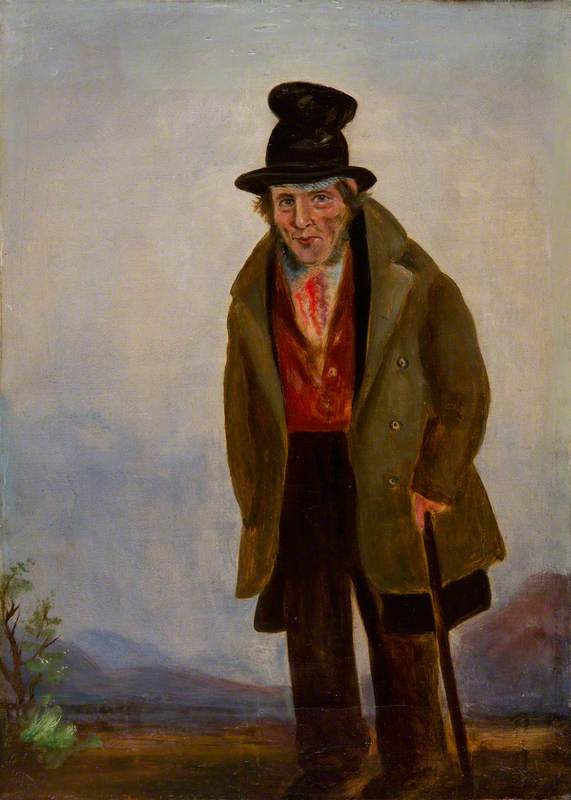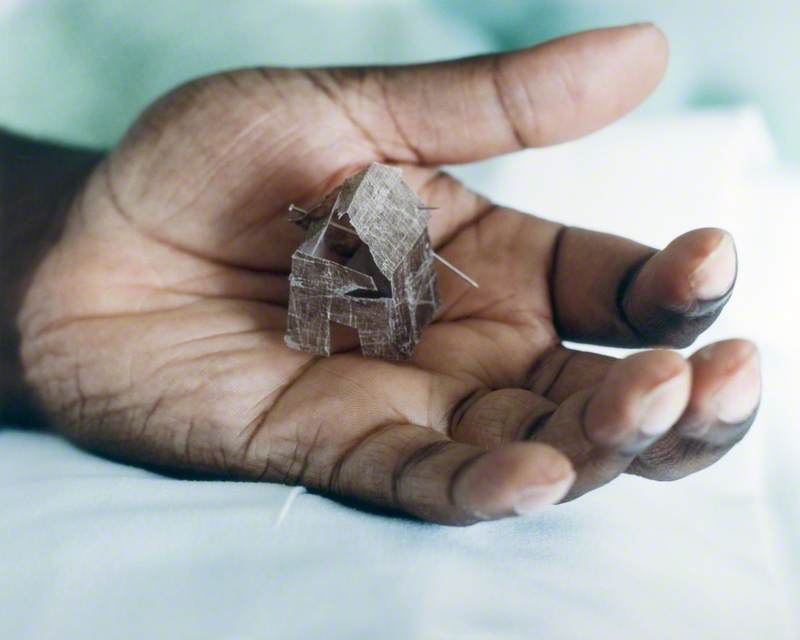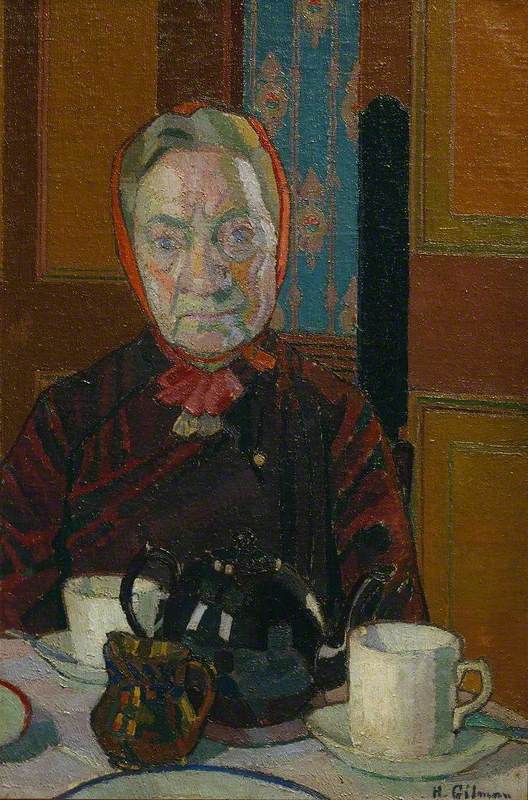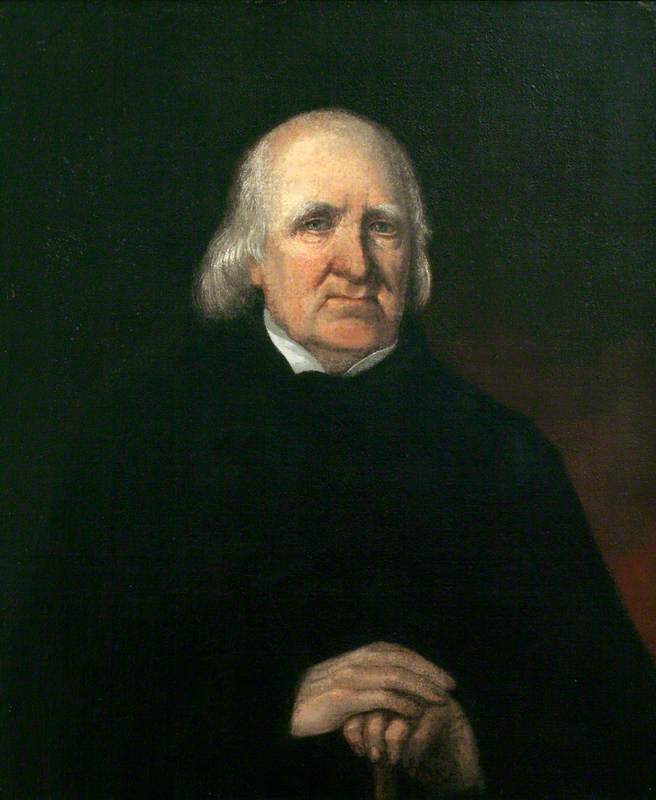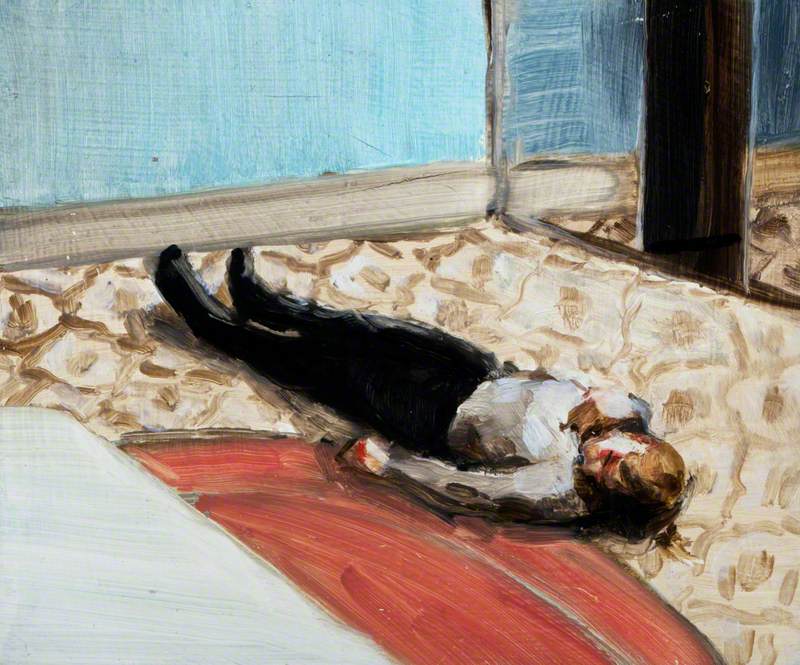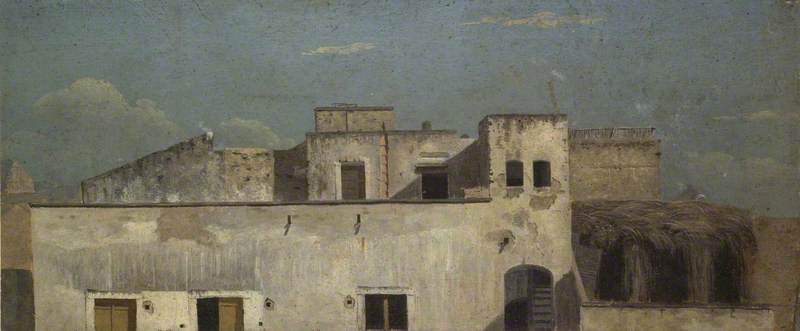Amgueddfa Cymru – National Museum Wales houses one of Europe’s finest art collections, with 50,000 works spanning more than five centuries.
The collection is particularly strong in its late nineteenth- and twentieth-century galleries, due to the bequest of 260 works by Gwendoline and Margaret Davies. In the last 20 years, the Museum has expanded its contemporary collecting; bringing together a significant body of national and international contemporary art.
Art Unlocked is an online talk series by Art UK in collaboration with Bloomberg Philanthropies. This Curation is based on a talk by Neil Lebeter, Senior Curator: Modern & Contemporary Art at National Museum Wales, on 9th February 2022. You can find a recording at: https://youtu.be/LZgaGX4-BDQ
-
The Bard 1774
The last Bard stands on the edge of a cliff, looking back at the advancing troops of Edward I of England. Before leaping to his death, he places a curse on the King and his invading army. This has become an iconic image for Wales. The painting can be seen as liberty in the face of tyranny, and also of a loss of culture, language and identity.
Jones used Thomas Gray’s poem of the same name as inspiration. This recounts Edward I’s fabled massacre of the Welsh Bards in the 13th century.
Thomas Jones (1742–1803)
Oil on canvas
H 114.5 x W 168 cm
Amgueddfa Cymru – National Museum Wales
-
Untitled (History) 2002
Books are repositories of our shared culture. This work was made by casting the space around a set of bookshelves. The books themselves are absent, only their ghostly traces remain.
Whiteread has created a series of these sculptures that are often seen as a form of memorial. Untitled (History) suggests how easily collective memory can be lost.
Rachel Whiteread (b.1963)
Plaster, polystyrene & steel
H 129 x W 70 x D 26 cm
Amgueddfa Cymru – National Museum Wales
-
The Kitchen c.1908–1909
A lone figure is shown within the domestic space of the kitchen. As the title suggests, Gilman has positioned the subject as indistinguishable from the kitchen and its role within the home.
Gilman, and the wider Camden Town Group, are hugely important in shaping art in Britain in the first part of the 20th century. Gilman was part of the Allied Artists Association, a progressive affiliation of artists that was set up to promote modernist art and create an exhibiting organisation outside of the Royal Academy. However, the irony of much of the Camden Town paintings is that, although women and the domestic sphere feature prominently as subject matter, women artists were expressly denied membership of the group.
Harold Gilman (1876–1919)
Oil on canvas
H 62 x W 46.2 cm
Amgueddfa Cymru – National Museum Wales
-
Conditioning 2019
Rich in art historical references, Walker draws on the past to question the present. Her work interrogates the female subject from a female perspective, subtly subverting the notion of the male gaze.
By focussing on domestic or professional interiors, Walker explores the often hidden labour of cities and roles that are overwhelmingly occupied by women.
Caroline Walker (b.1982)
Oil on linen
H 215 x W 155 cm
Amgueddfa Cymru – National Museum Wales
-
Thomas Euston, Lodge Keeper, Hirwaun c.1835–1840
The group that this painting comes from is unique. The sixteen men in these little portraits all worked for Francis Crawshay (1811-1878), a reluctant industrialist, who maintained unusually close personal relationships with his employees. In the mid-1830s, Francis was in charge of the Hirwaun Ironworks and of the tinplate works at Treforest, near Pontypridd.
These are thought to be the only known examples of named portraits of 19th century workers. The portraits subvert the hierarchy of art, whereby only the rich and powerful in society could have their portrait painted. These men are not rich industrialists, but the ordinary workers who drove the Industrial Revolution.
William Jones Chapman (1808–after 1870) (attributed to)
Oil on canvas
H 36.3 x W 25.6 cm
Amgueddfa Cymru – National Museum Wales
-
In the House of My Father 1996–1997
Within the artist’s hand sits a small sculpture made from his skin. This was removed during treatment for sickle cell anaemia. An inherited genetic condition, it is particularly prevalent in people of African or Caribbean descent. A moving self-portrait, the work retains an ambiguous power. It carries profound messages around inherited experience.
As Rodney’s health deteriorated, his work increasingly focussed on his own mortality, along with his sense of family and identity. As a British-born artist whose parents had emigrated from Jamaica, Rodney explored shifting notions of Britishness and the experience of the Afro-Caribbean diaspora.
Donald G. Rodney (1961–1998)
Chromogenic print on aluminium
Amgueddfa Cymru – National Museum Wales
